

The workshop we presented was part of a three-part series coordinated by Warren Andrews.
The Place: Croydon Arts Store (CAS), Croydon, South London. Located at the time within the Whitgift shopping centre in central Croydon CAS is a partnership of four organisations; Turf Projects, Art Halo, Kingston University and Croydon Council.
The People: Representatives from three artist-led initiatives HUTT, PACTO and Sandwich Collective. PACTO and Sandwich were both based locally to CAS with HUTT at the time of the workshop being split between Göteborg and London. The representatives from the collectives involved came from a variety of backgrounds and represented a range of nationalities, experiences and aims.
The Premise: A series of workshops held over three weeks, each led by one of the invited artist-led initiatives. These workshops explored a set of questions and subjects key to the thesis “Can social and community benefits be uniquely delivered by an artist-led platform?” 1. This question formed a part of a broader research project the four partners of CAS were engaged with.
The workshop subject Connor and I approached, in the broadest sense, was community. This topic presented a couple of tricky elements to deal with before getting into the nitty-gritty. Firstly what do we mean by community? Secondly the question of why, exactly, it should be artist-led projects (invariably the most underfunded, under-resourced and seemingly more intimidating institutions for a non-art audience of all cultural institutions) who are responsible for providing those social and community benefits.
We spent quite a lot of time during the workshop trying to untangle the question of community. A community isn’t a single homogenous thing. Communities are made up of a nested set of identities which layer into one another and intersect along cultural or social lines. They are simultaneously completely visible and invisible. Using Manuel Delanda's Assemblage Theory 2 helps me unpick what a community is. In the same way as Delanda positions individual communities as a component of a larger assemblage, a community is itself an assemblage. An assemblage is always made of heterogeneous components 3. This means that despite the appearance of sameness there is always difference; each part of the assemblage is and aways must be individual. However, included with that are the "material and symbolic artefacts" 4 related to that assemblage which can help offer context. For example, the relations present in a work environment are as much dependent on the specific architecture and location of the workspace as the workers in it. Assemblages are scalable, as I alluded to earlier, nesting within and adjacent to one another in what Deleuze and Guattari frame as populations 5. An assemblage emerges from the interactions between the parts that make it up. But once established a social assemblage, like a community, immediately starts acting as a source of limitations and opportunities for its components 6. This operates through systems of social norms which the specific community enforces 7. For example, a community may through its system of social norms limit those within it from eating certain foods, wearing certain clothes or performing certain tasks but at the same time present networks of financial, emotional and spiritual support.
There are multiple ways to identify and navigate communities and rarely does an individual sit within one neat grouping. Because of that, the question of community is where many problems rear their heads in policy-making and artistic projects that involve “the community”. It is too easy to presume that “the community” is a single homogenous thing. Even keeping assemblage theory in mind it is easy to presume sameness in a community, not just physical identifiers like clothing, gender or race but on ideological, professional or financial levels. It is also too easy to put our own innate biases onto that imagined community. Avoiding those biases, as we discovered, is incredibly difficult. Ahead of the workshop, for example, I looked at the demographic breakdown of Croydon to get an idea of what possible communities might be there. Those statistics can present a guide to an extent but in real terms are totally useless. According to the statistics, there are large West-African, Caribbean and South-Asian communities along with a growing community of young professionals who are commuting to Central London. In a sense that paints a picture but, reflecting on it now, actually says very little of the real communities that exist in Croydon.
We started the workshop by trying to identify a selection of the diverse communities which make up Croydon and start to distinguish what we perceived as their wants and needs. Ultimately a large amount of what we perceived to be the issues these communities face wasn’t necessarily accurate. There was a constant danger of us putting words into peoples mouths. We pushed on speculatively and tried to focus more on the communities that were represented by the workshop's participants. This presented another problem as the only people in the workshop were involved in artist-led projects. That was the community we all had in common. We were the kind of people who are perhaps least intimidated by artist-led. That doesn’t necessarily help in identifying how we can be more accessible outside of saying that we should be more accessible.
Reading back through reflections on the workshop series by members of Sandwich and PACTO the key thing that came to the fore is the focus still is on the community in which they/we exist. Members of Sandwich refer to a feeling of loneliness and a desire to produce a network of contacts that the workshops helped them to establish 8. Allesandro Moroni of PACTO wrote about the discussion continually coming back to trying to identify what we do as artists. This is positioned both as an unending question and a driving force behind continuing to do whatever it is that we do 9. This feedback loop is a situation I find deeply aggravating in many cultural organisations. The constant need to identify, classify and justify your practice out of a mixture of imposter-syndrome and attempts to conform with accepted labour models in other sectors as dictated by academic programs and archaic institutional models results in endlessly chasing our tail. Whilst these questions are useful in positioning ourselves and informing others of what our practice is they are also traps which slow down answering larger-scale questions by repeating the same introspection ad nauseam. Musing over linguistics was foundational to everything produced during the workshops, but there was also a possibility to pragmatically develop structures outside of those more ephemeral and uncapturable ideas. Whilst the workshops were not aimed at finding a coherent and agreed-upon answer, other than a resounding “no” to the redevelopment of Whitgift Center 10 where CAS was situated, I think there was a great amount more that we did agree on. More than is perhaps suggested in the publication and reflections produced by CAS.
All of those reflections speak to the fact that the only community that we felt we could speak for was our own as artists or artist-led projects. For me, that was a big wakeup call as to just how much of an eco-chamber the arts can be. It also brought into sharp focus the difficulties that come with trying to be more aware of the communities around you as an artist-led project. It's so much easier to stick to what you know. It made it feel incredibly important that we try and think of reasons why that is? Why some of the various communities we had pinpointed might not feel welcome or represented in AL&SO? How can we make contact with these communities and make them feel more welcome?
Ultimately what we produced as a group was a collaboratively written manifesto of sorts; a set of guiding questions, doubling as a checklist for our institutional practice.
1. Who is the community in question?
2. Is the space being used accessible, affordable and comfortable for the people involved?
3. Are we being honest about our agenda?
4. Are we being sensible and reasonable in our use of time?
5. How are we communicating with the people involved?
6. Are we negotiating the scale of the intervention with those involved?
7. Are we considering variance in activity - physical, mental and emotional - and its impact?
8. How can we best form a way of interacting with communities around us in a way that is beneficial for all parties?
9. Do we have a community agreement including gender pronouns and check-in that is consistently met, adhered to and made together?
10. Have we catered for the people participating?
11. Are we communicating with the people involved?
12.Are we using and creating a safe space?
In collaboratively producing this manifesto I think we demonstrated that there is a lot of similarity in terms of how we as artist-led organisations define and position our own community within the spectrum of communities. I also believe that in producing this as a set of questions, as much a reminder to ourselves as a statement of intent, we took a step towards unequally delivering social and community benefits. For me, there is a degree to which "social and community benefits” is just guff. Allesandro Moroni refers to it as “something you would drop while writing an application to give the idea of an “engaged” practice” 11, and I agree. It is in effect a euphemistic, new-speak justification of engagement with the generation of statistics. What might these benefits be?
If its education: What and who are you educating and on what subject? If the project hinges on funding to happen what compromises are you making in the curriculum to get that funding?
If it is offering space for a community: What community? What space? Are they producing the work? If so are they/should they be paid?
The list goes on. What I am trying to demonstrate here is that; a) social and community benefits are broad in the extreme; b) that broadness makes it meaningless, ineffectual and easily instrumentalist as a term and tool to prevent certain forms of activity as much as help them.
Again this brings me back to the question of artists/artist-led organisations being intent on defining what they are. Navel-gazing on these subjects is pointless. Whilst the workshops were incredibly generative in many ways, I wonder how they directly impacted on finding an answer to the question of “Can social and community benefits be uniquely delivered by an artist-led platform?” The publication suggests not really. It also suggests that it was no accident that the result was inconclusive. I agree with it in many ways as an act of resistance. Mostly this is concerning the second of the tricky questions from earlier, that of why it is AL&SO’s responsibility? No, we can’t be responsible for uniquely delivering social and community benefits because that gives an out to big institutions and governments. At the same time yes, there are unique benefits that AL&SO can provide to communities. They can be representative of and respectful to the communities around them by directly communicating with them. Not communicating to or at them, but with them. AL&SO can be more immediately responsive to those communities due to their small size and nimbleness in decision making in comparison to the titanic of the Tate or even mid-sized galleries. They can become a part of the communities they exist within in ways that large institutions can’t. As in previous Reflecting on... texts I am keen here to distinguish community art projects and art projects that include communities.
The important thing with that in mind though is that that can’t be allowed to be the case on the current basis of funding in the UK and I would hazard plenty of other countries. The way I keep talking about AL&SO is a way that I think Warren would approve of; it’s a football metaphor, you are allowed to groan. You can’t have a successful elite-level national team without a solid, well supported and well-structured grassroots game in the form of youth access to football, access to facilities and good training. The same is true in culture. If the policies presently being pursued by the UK government around funding for the education and culture sectors continue, then the grassroots of British culture will further degrade. Without change institutions will continue to be the preserve of the elite with limited diversity, stale ideas and either sycophantic or disillusioned audiences. Put frankly there will not be suitable players to support an elite level national team of progressive, dynamic and relevant institutions. This is a state of play I suspect is present in many countries in the global east, west, north and south and for me highlights the importance of globally networks AL&SO infrastructure.
The question of community in relation to AL&SO is always going to be a complex one. There is always going to be a desire to programme to personal taste (I know I’ve done it). There is always going to be a situation of a certain amount of cliquishness developing around AL&SO projects due to their limited resources, mandate and visibility in comparison to large institutions. But that doesn’t mean we should revert to navel-gazing, musing over the question of what it is we do and obsessing over our position within a limited purview. Instead, we should start reaching out, finding ways of communicating with the other communities around us and finding out how we can bring them in. This will help us grow as organisations and as people. It extends that limited purview. It increases visibility. I hope that the publication linked below from the workshop and the points provided in the manifesto above provide food for thought for you, dear reader, as they have for me.
(1) Andrews, Warren. Sandwich x HUTT x PACTO: A Collection of Responses to 'Can Social and Community Benefit be Unequly Delivered by an Artist Led Platform?' London: Croydon Arts Store. 2019. E-Book.
(2) Delanda, Manuel. Assemblage Theory. Edinburgh: Edinburgh University Press. 2016.
(3) ibid. pp.20
(4) ibid.
(5) ibid.
(6) ibid. pp.21
(7) ibid.
(8) Sandwich Collective. Email communication 2021.01.11
(9) Moroni, Allesandro. PACTO. 2019. PACTO x Sandwich x HUTT Publication. https://pacto.group/Archive-PACTO-x-Sandwich-x-Hutt-CAS accessed:2021.02.12
(10) Andrews, Warren. Sandwich x HUTT x PACTO: A Collection of Responses to 'Can Social and Community Benefit be Unequly Delivered by an Artist Led Platform?' London: Croydon Arts Store. 2019. E-Book.
(11) Moroni, Allesandro. PACTO. 2019. PACTO x Sandwich x HUTT Publication. https://pacto.group/Archive-PACTO-x-Sandwich-x-Hutt-CAS accessed:2021.02.12
ESSAY
Joe Rowley - FEB 2021
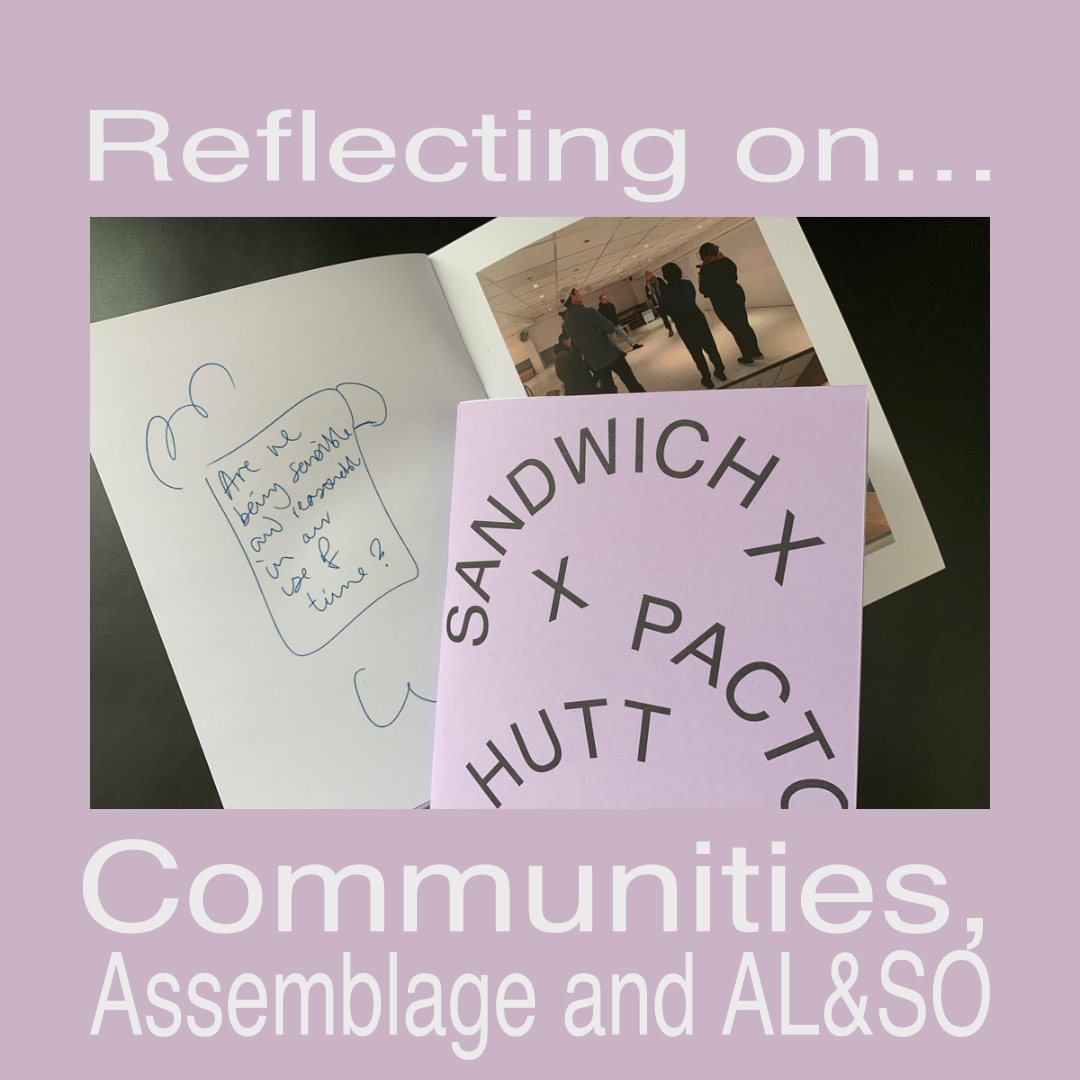
The Reflecting on... series takes situations, objects, artworks, articles, texts, podcasts and anything else really as starting points for reflection on artist-led and self-organised (AL&SO) practice.
Sandwich x HUTT x PACTO Publication
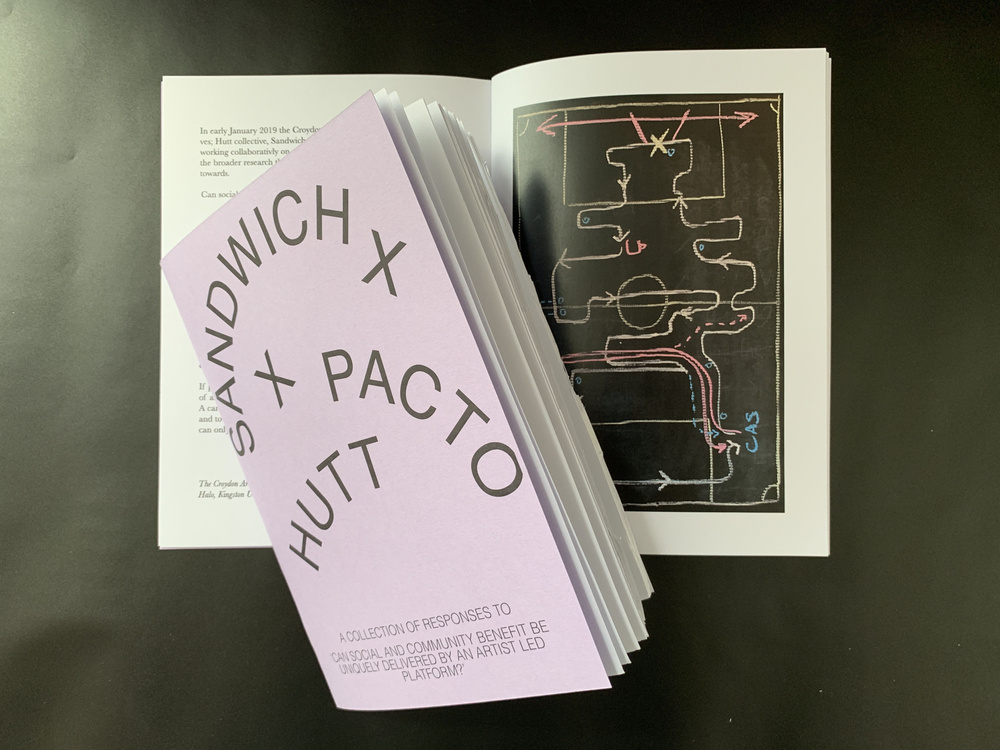
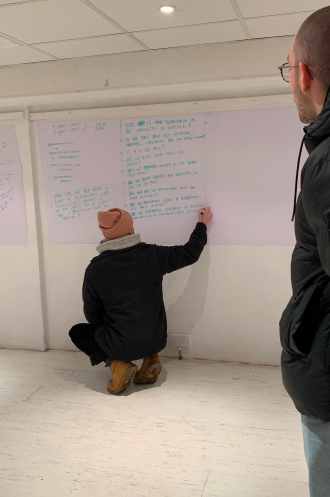
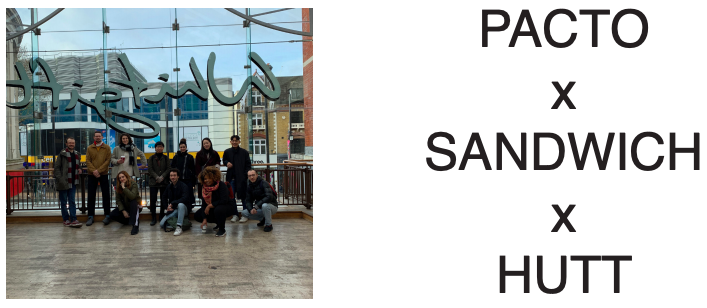
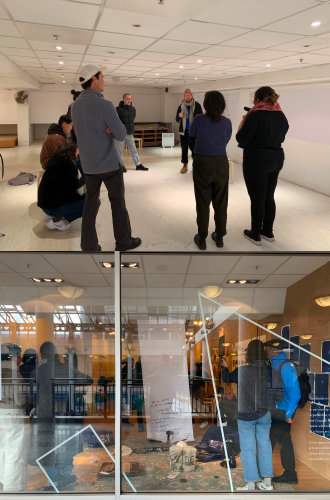
Ephemeral Care focuses on ethics, practice and strategies in artist-led and self-organised projects.